Forests, with their lush canopies and diverse ecosystems, play a vital role in our planet's health. In this article, we delve into the top 10 largest forests in the world, ranking them based on their total land area. Additionally, we'll explore the remarkable biodiversity these forests harbour, making them invaluable treasures of our natural world.
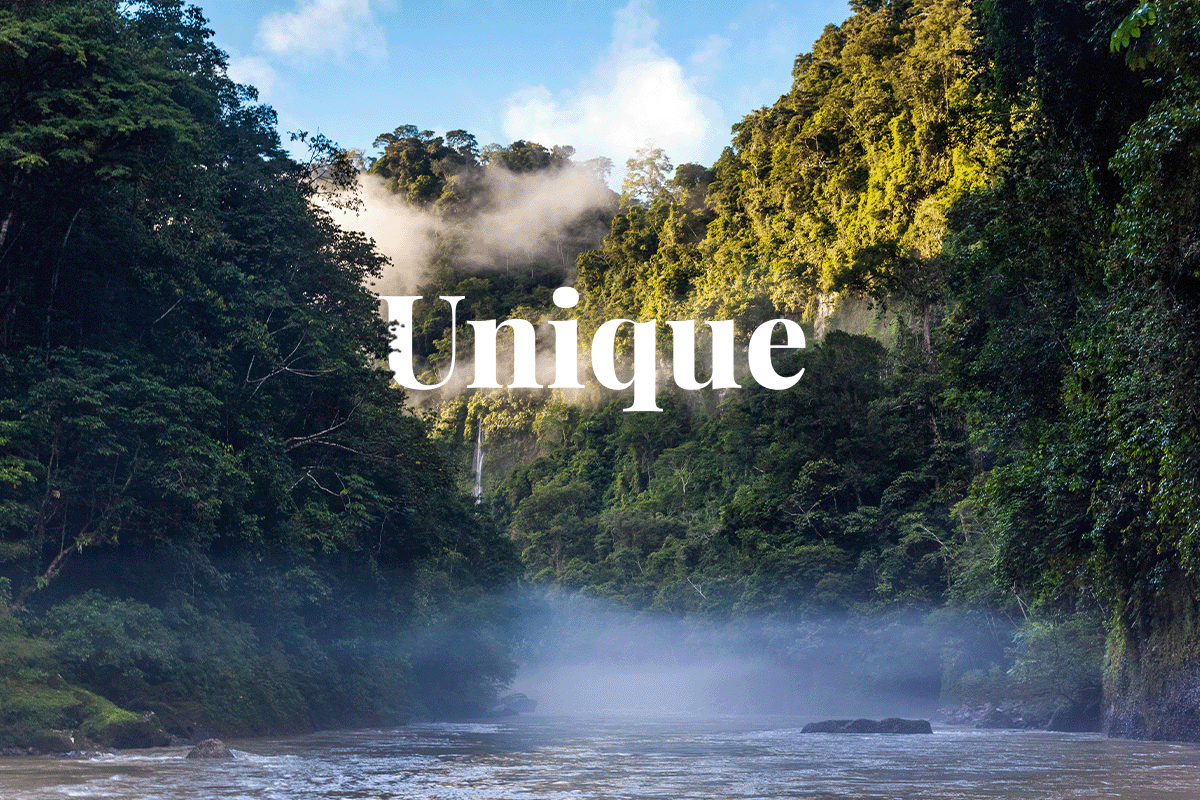 Foggy Amazon Rainforest at sunset.
Foggy Amazon Rainforest at sunset.
1. Amazon Rainforest: the crown jewel of biodiversity
The Amazon Rainforest, occupying a large part of South America with Brazil at its heart, claims the top spot as the largest tropical rainforest on Earth. Spanning approximately 5.5 million square kilometres, it pulsates with an incredible array of plant and animal species, many of which are found nowhere else. This biodiversity hotspot is a critical pillar in maintaining global climate stability and supports indigenous communities. The Amazon River, flowing through its heart, sustains a rich aquatic ecosystem and nurtures iconic species like jaguars, macaws, and pink river dolphins.
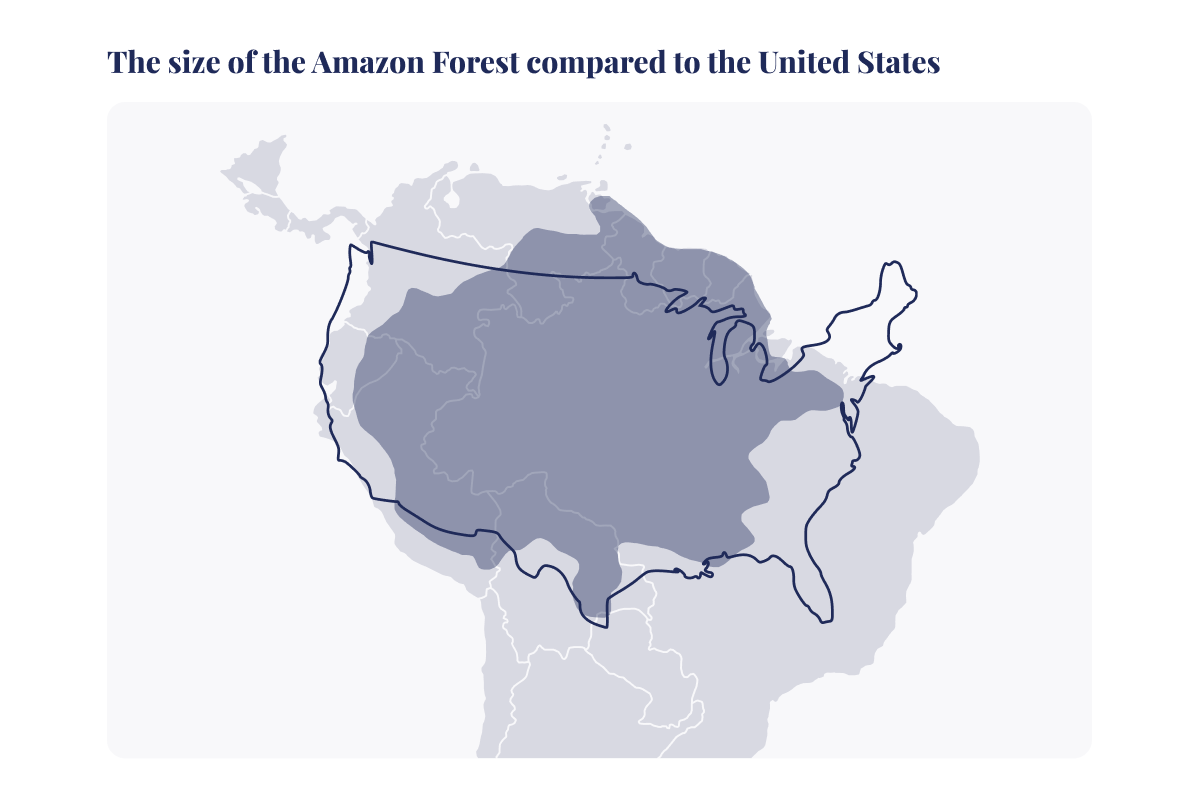 Map showing the size of the Amazon Forest compared to the United States.
Map showing the size of the Amazon Forest compared to the United States.
The Amazon Rainforest is home to over 40,000 plant species, including the Victoria Amazonica water lily and the Brazil nut tree. Indigenous communities, such as the Yanomami and Kayapo, have inhabited these lands for centuries, and their cultures are intricately intertwined with the forest’s resources.
Read more: Deforestation in the Amazon Rainforest: causes, effects, solutions
2. Congo Rainforest: an oasis in Central Africa
The Congo Rainforest, also known as the Central African Rainforest, sprawls across several countries and is approximately 3.7 million square kilometres, with the Democratic Republic of the Congo occupying a significant part of it. Its vast expanse hosts an astonishing diversity of wildlife, including gorillas, forest elephants, and countless bird species. This forest provides crucial ecosystem services while facing the challenges of deforestation and conservation. The Congo River, winding through its heart, sustains a unique aquatic environment, and its remote swamps are home to the enigmatic and elusive okapi.
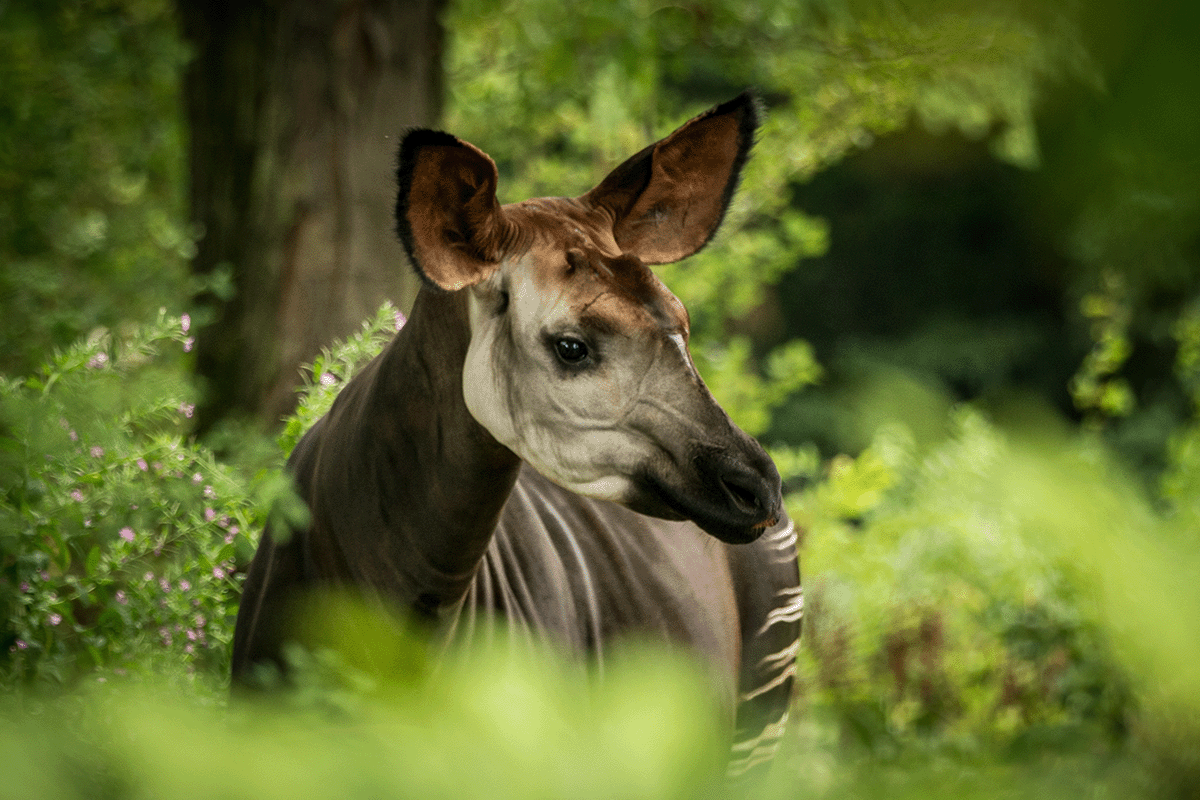 Portrait of Okapi (Okapia johnstoni) in Congo Rainforest, Central Africa.
Portrait of Okapi (Okapia johnstoni) in Congo Rainforest, Central Africa.
The Congo Rainforest is a sanctuary for over 10,000 plant species, some of which have powerful medicinal properties. The forest is vital for the livelihoods of millions of people, including the Indigenous communities of Baka and Mbuti.
3. New Guinea Rainforest: a tropical paradise
The New Guinea Rainforest, located on the world's second-largest island, captivates with its lush landscapes and rich biodiversity. The forest covers approximately 780,000 square kilometres and makes up more than 70% of the land area. It is one of the most species-rich regions globally, with an estimated 13,000 plant species, including unique orchids and carnivorous pitcher plants. The forest is also a haven for rare and endemic animal species, such as the tree kangaroo and the vibrant bird of paradise (Strelitzia) plant. The New Guinea Rainforest is a living laboratory for scientists studying evolutionary processes and ecosystem dynamics. The New Guinea Rainforest is renowned for its unique and fascinating wildlife, such as the Vogelkop bowerbird, known for its intricate mating displays, and the world's largest butterfly, the Queen Alexandra's birdwing
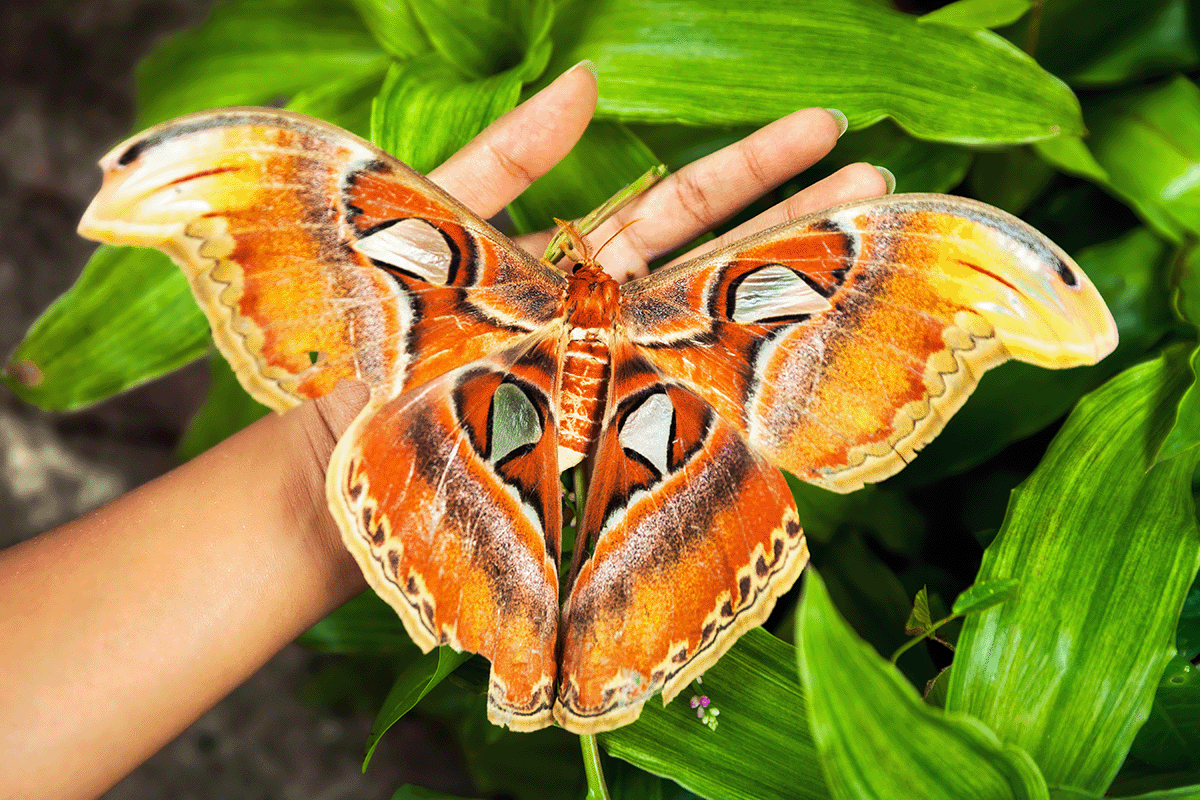 Butterfly The Queen Alexandra’s birdwing sitting on a human hand.
Butterfly The Queen Alexandra’s birdwing sitting on a human hand.
Read more: Deforestation in Asia: a call for conservation
4. Appalachian Rainforest: the wilderness of the Eastern United States
The Appalachian Rainforest stretches across the Eastern United States, enveloping approximately 350,000 square kilometres across the majestic Appalachian Mountains. It is a biodiversity hotspot with over 2,000 tree species and a variety of wildlife, including black bears, salamanders, and migratory birds. The forest is also home to fascinating plant communities, such as the iconic rhododendron thickets and the ancient hemlock forests. The Appalachian Rainforest plays a vital role in regulating water flow, providing clean drinking water to millions of people downstream.
The Appalachian Rainforest is home to unique animals such as the red wolf, a critically endangered species, and the hellbender, a giant salamander found in the region's streams. Indigenous communities, including the Cherokee and Lumbee, have deep historical and cultural ties to this forest, relying on its resources for sustenance and traditional practices.
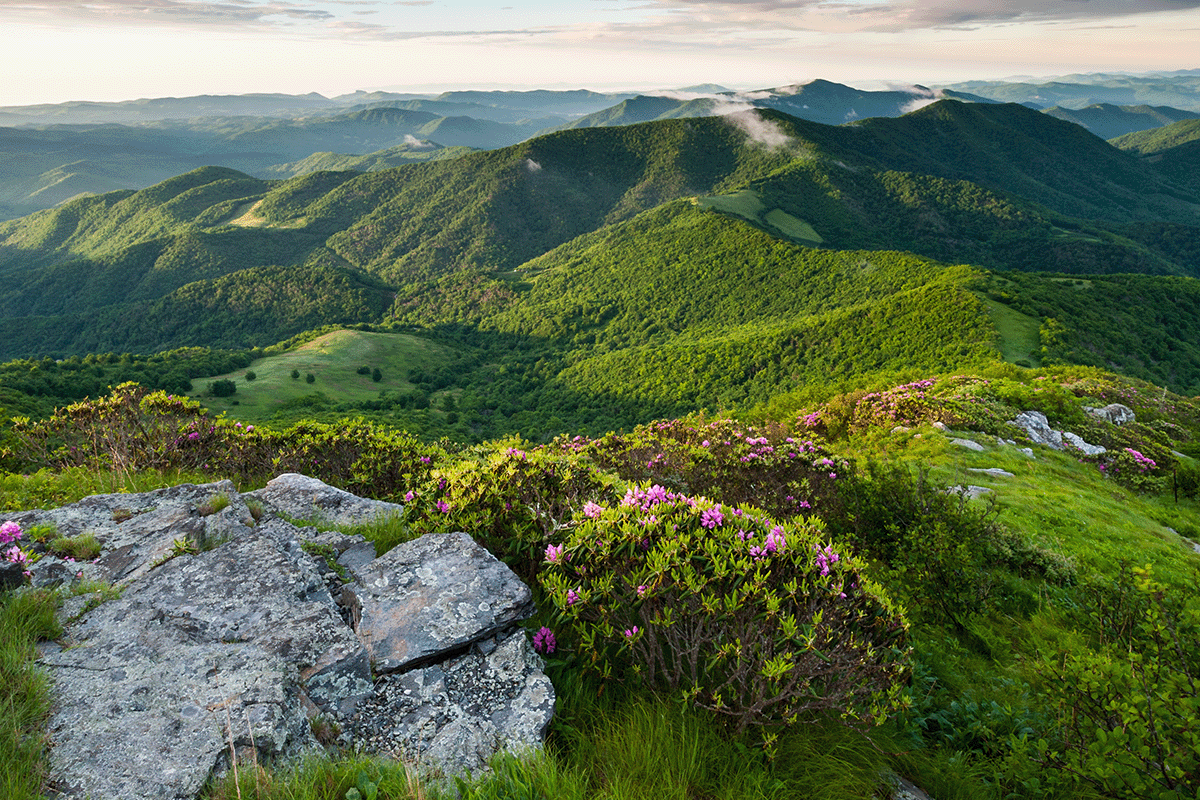 View of Appalachian Mountains.
View of Appalachian Mountains.
5. Valdivian Temperate Rainforest: nature's treasure in South America
Nestled in the southern part of Chile and Argentina, the Valdivian Temperate Forest showcases a remarkable diversity of plant and animal life. This ancient forest spanning approximately 250,000 square kilometres, is known for its impressive array of tree species, including the endemic Fitzroya cupressoides, commonly known as the Alerce tree, which can live for over 3,000 years and is the largest tree species in South America. It is also home to the endangered huemul deer and provides a habitat for unique bird species such as the Magellanic woodpecker. The Valdivian Temperate Forest is a treasure trove for researchers studying temperate rainforest ecosystems.
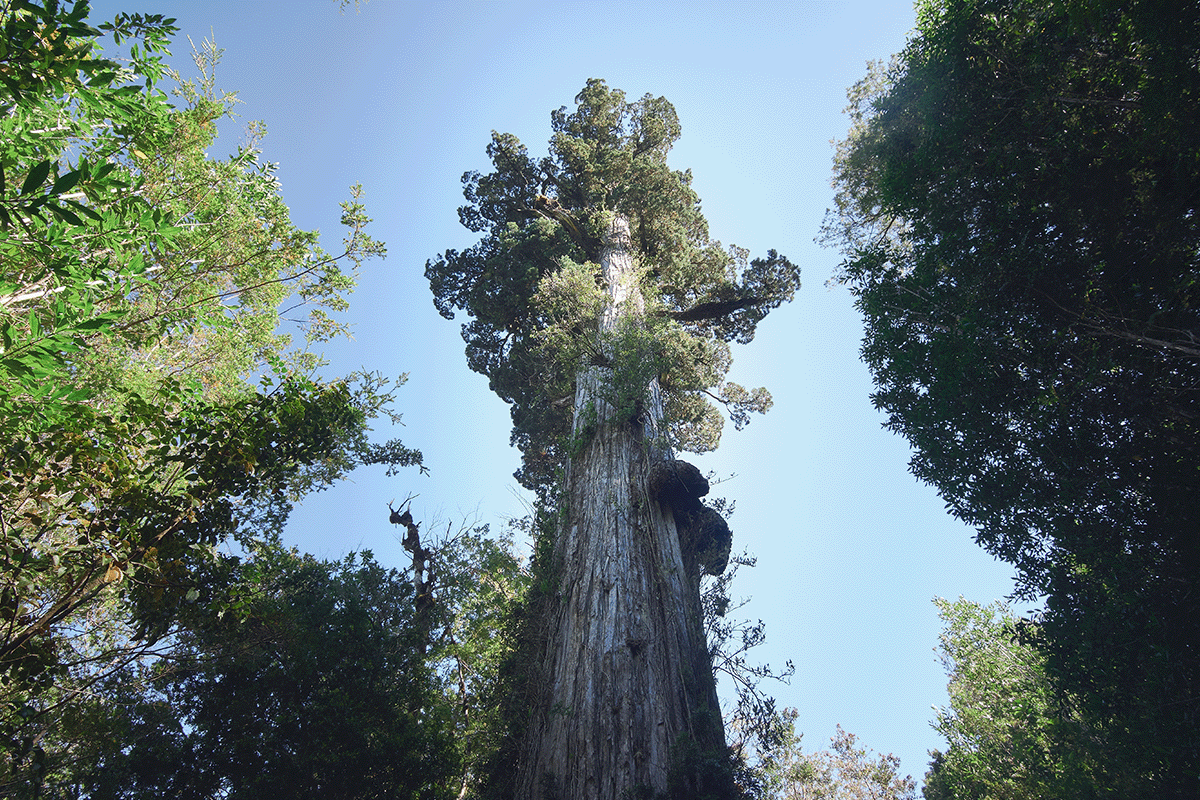 Panoramic view of millennial Alerce tree.
Panoramic view of millennial Alerce tree.
6. Atlantic Forest: Brazil's biodiversity hotspot
The Atlantic Forest, with its approximately 100,000 square kilometres along Brazil's eastern coast, harbours incredible species richness and endemism. Despite its fragmented state due to urbanisation and agriculture, it remains a crucial sanctuary for unique plants and animals. The forest is home to over 20,000 plant species, including the iconic Brazilian rosewood and the endangered Brazilwood or Pau-Brasil tree. It shelters an astonishing array of wildlife, including the endangered golden lion tamarin and the elusive jaguar. The Atlantic Forest is also vital for water regulation, providing freshwater to major cities in Brazil.
Read more: Nature’s symphony: 15 Interconnected wonders of biodiversity
7. Tongass Forest: Alaska's pristine wilderness
The Tongass Forest, encompassing approximately 70,000 square kilometres, is the largest national forest in the United States, embracing the stunning landscapes of Southeast Alaska. It is characterised by ancient old-growth trees, including Western red cedar and Sitka spruce, some of which are over 800 years old. This forest provides habitats for numerous species, such as bald eagles, brown bears, and the elusive Alexander Archipelago wolves. The Tongass Forest is a crucial carbon sink, storing vast amounts of carbon and contributing to climate stability.
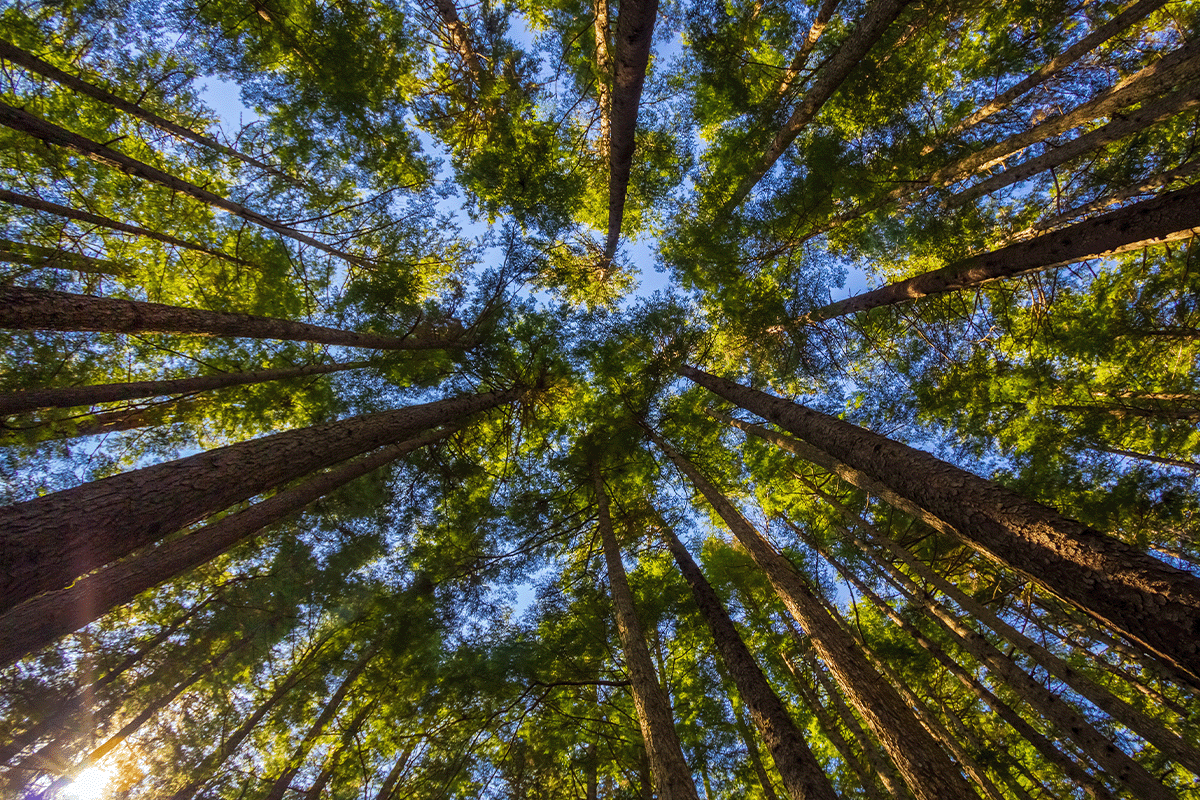 Sitka Spruce, Alaska.
Sitka Spruce, Alaska.
8. Xishuangbanna Rainforest: China's tropical gem
Situated in Yunnan province, covering an area of approximately 19,000 square kilometres, the Xishuangbanna Rainforest showcases the unique biodiversity of southern China. This tropical forest is home to over 5,000 plant species, including the iconic Chinese fan palm and the rare Amorphophallus titanum, also known as the corpse flower. It provides habitats for numerous animal species, including the Asian elephant, clouded leopard, and more than 500 bird species. The Xishuangbanna Rainforest is also culturally significant, with Indigenous communities, such as the Dai and Hani, practising sustainable traditional farming methods and preserving their rich cultural heritage.
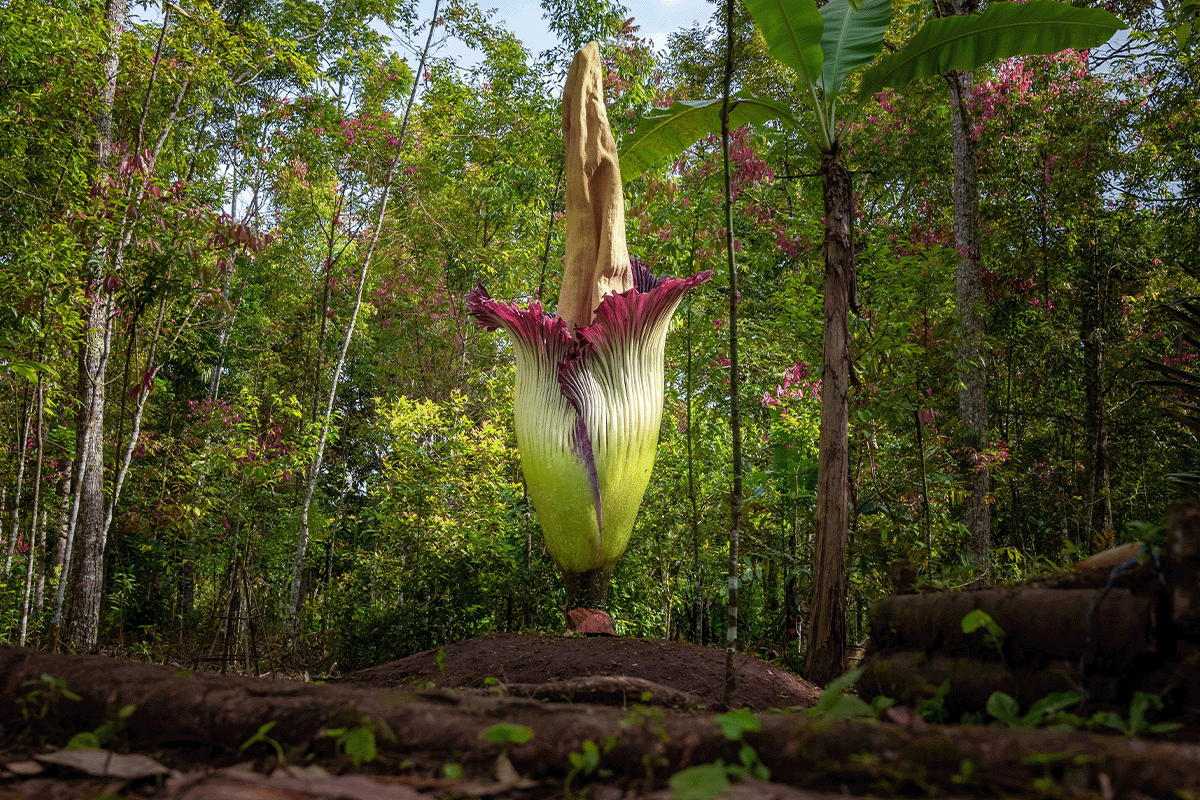 The giant Amorphophallus titanum flower in a forest, China.
The giant Amorphophallus titanum flower in a forest, China.
9. Bosawas Rainforest: Nicaragua's natural wonder
The Bosawas Rainforest, spanning across 10,000 square kilometres, in Nicaragua shelters incredible biodiversity, including over 200 species of mammals, such as jaguars, tapirs, and howler monkeys. It is also home to more than 700 bird species, making it a bird watcher's paradise. The forest plays a crucial role in maintaining water quality and regulating local climate patterns. It supports Indigenous communities, who have lived sustainably within its borders for centuries, preserving traditional knowledge and practices.
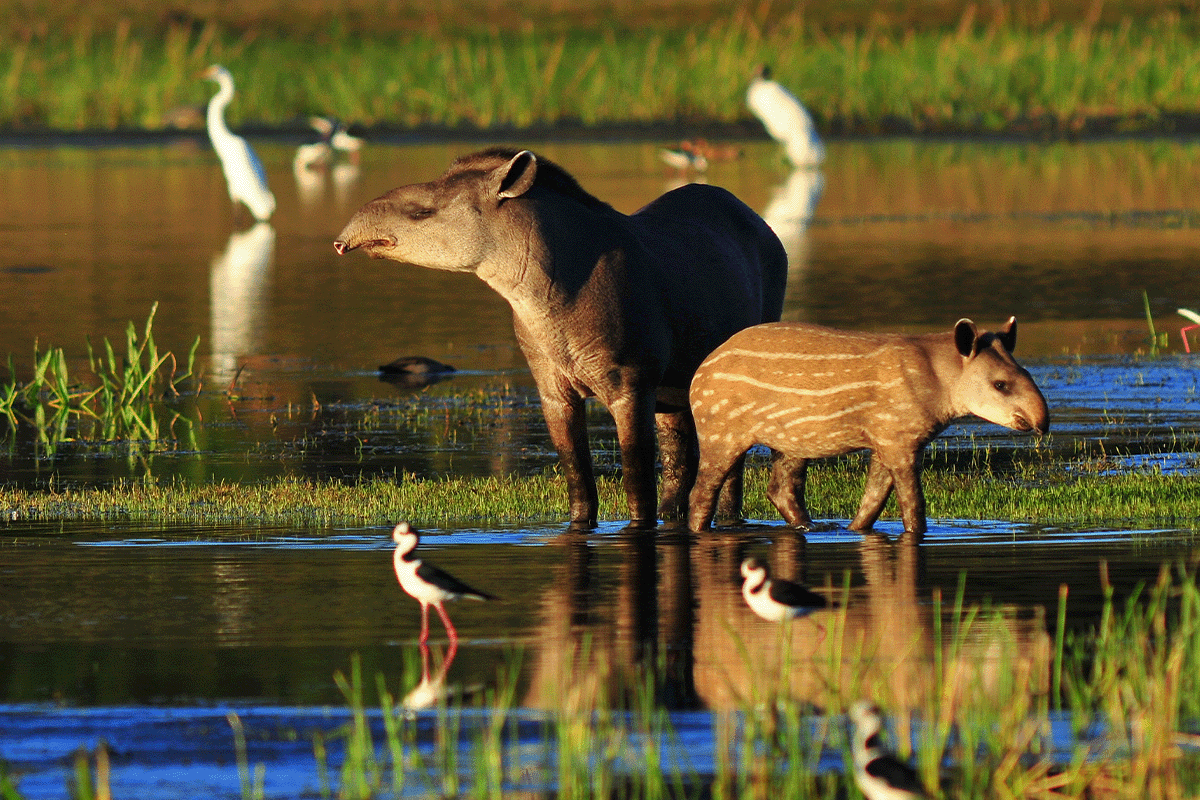 Tapir mother with a baby.
Tapir mother with a baby.
10. Daintree Rainforest: Australia's ancient riches
The Daintree Rainforest in Queensland, Australia, is one of the oldest rainforests on Earth, dating back over 135 million years. Its 1,200 square kilometres are home to an incredible array of unique flora and fauna, including the ancient cycads and the endangered cassowary, a large flightless bird. The forest is known for its pristine rivers, crystal-clear streams, and the breathtaking Mossman Gorge. The Daintree Rainforest holds immense cultural significance for the local Aboriginal communities, who have lived harmoniously with this ancient ecosystem for thousands of years.
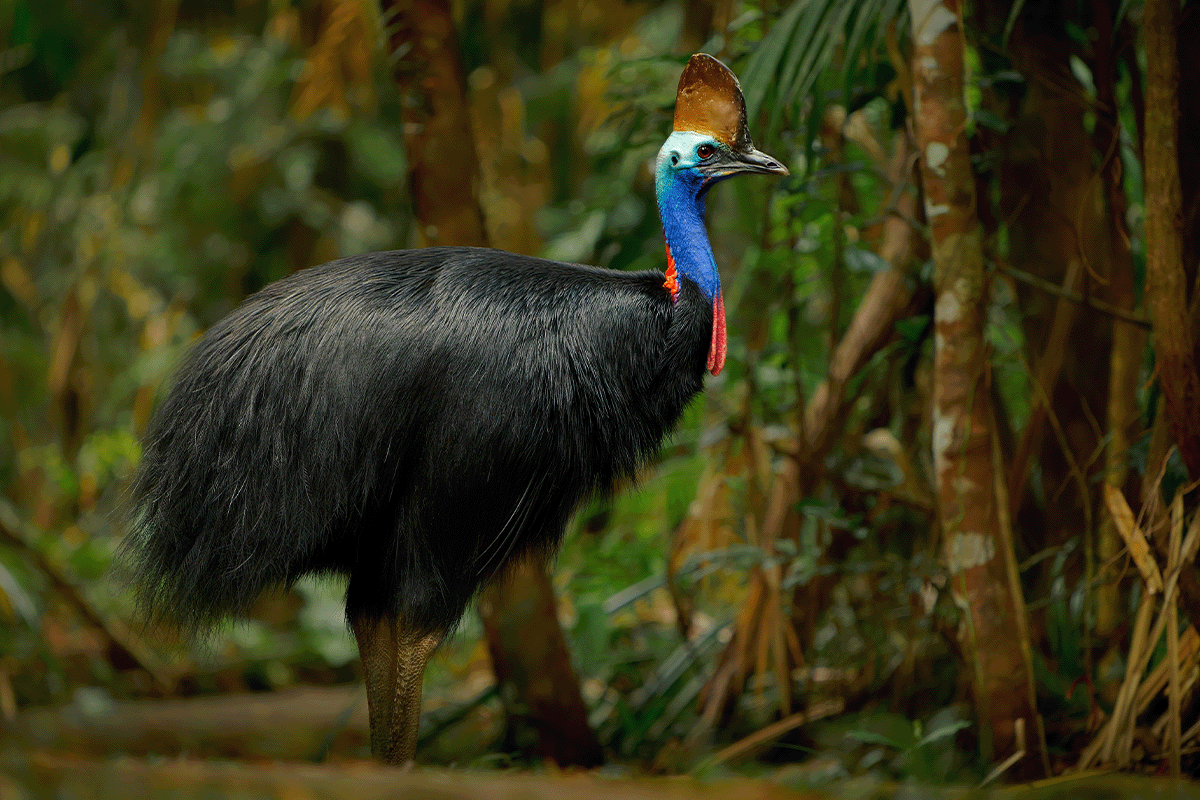 Cassowary in Daintree Rainforest.
Cassowary in Daintree Rainforest.
Honourable mention: Boreal/Taiga Forest
Stretching across North America, Europe, and Asia, the Boreal or Taiga Forest is the largest land biome on Earth, covering approximately 17% of the planet's land area. This immense forest, dominated by coniferous trees, is a vital carbon sink, mitigating climate change. It provides habitats for iconic species like moose, bears, wolves, and migratory birds. Indigenous communities have relied on its resources for generations, intertwining their lives with this magnificent forest. Despite facing threats from unsustainable logging and industrial activities, conservation efforts are crucial to preserving the biodiversity and ecological integrity of the Boreal/Taiga Forest.
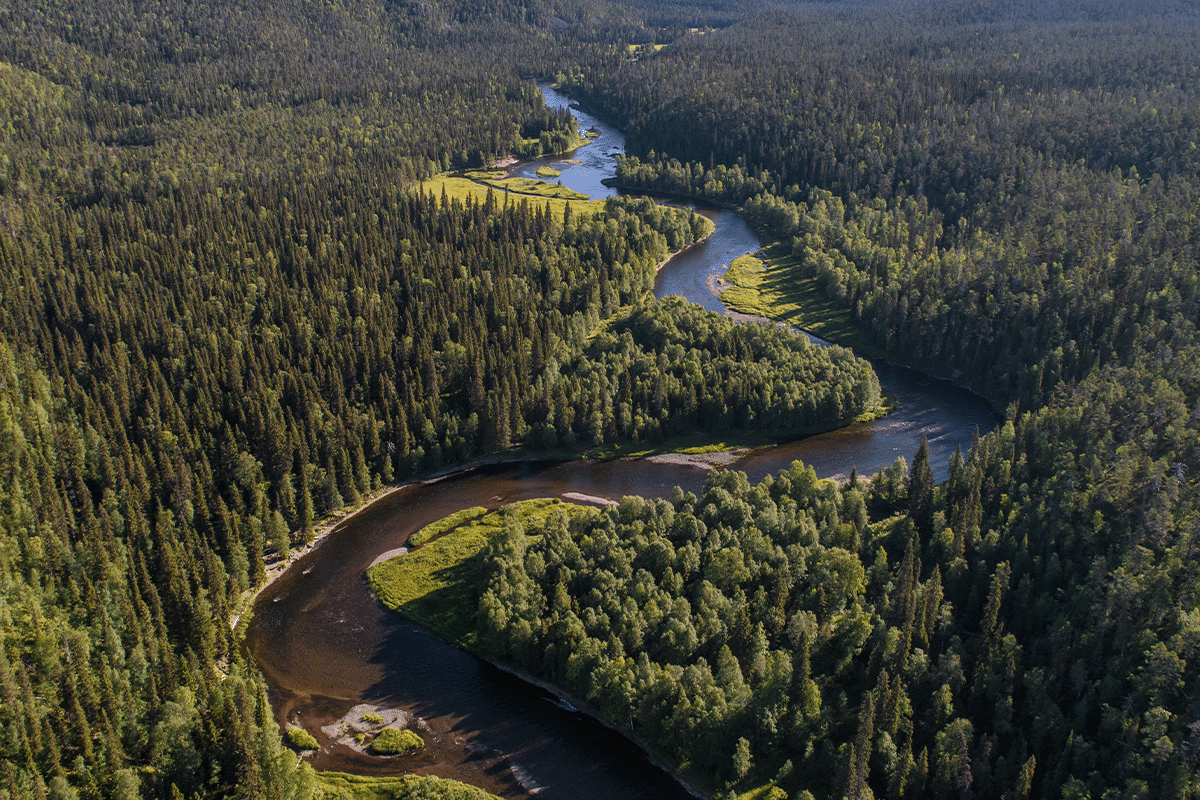 Aerial view of Boreal/Taiga forest on sunny summer day in Oulanka National Park, Finland.
Aerial view of Boreal/Taiga forest on sunny summer day in Oulanka National Park, Finland.
The Boreal/Taiga Forest may not have made it to the top 10 largest forests as it is classified as a land biome, but its vast expanse and ecological importance demand recognition and protection. As the largest land biome, it plays a vital role in carbon storage and climate regulation. Home to iconic wildlife and cherished by Indigenous communities, it embodies a delicate balance between humans and nature. However, like most other forests, unsustainable practices pose a threat to its survival, and its protection is vital for biodiversity and the planet.
Read more: What are boreal forests?
Protecting the world’s forests: DGB Group’s creed
The top 10 largest forests in the world not only captivate us with their sheer magnitude but also hold immeasurable ecological value. These forests provide habitats for countless species, support local communities, and play vital roles in climate regulation. As we continue to recognise their importance, it is essential to prioritise conservation efforts and sustainable practices to ensure their preservation for generations to come. By protecting these biodiversity hotspots, we safeguard the intricate tapestry of life that thrives within their leafy embrace.
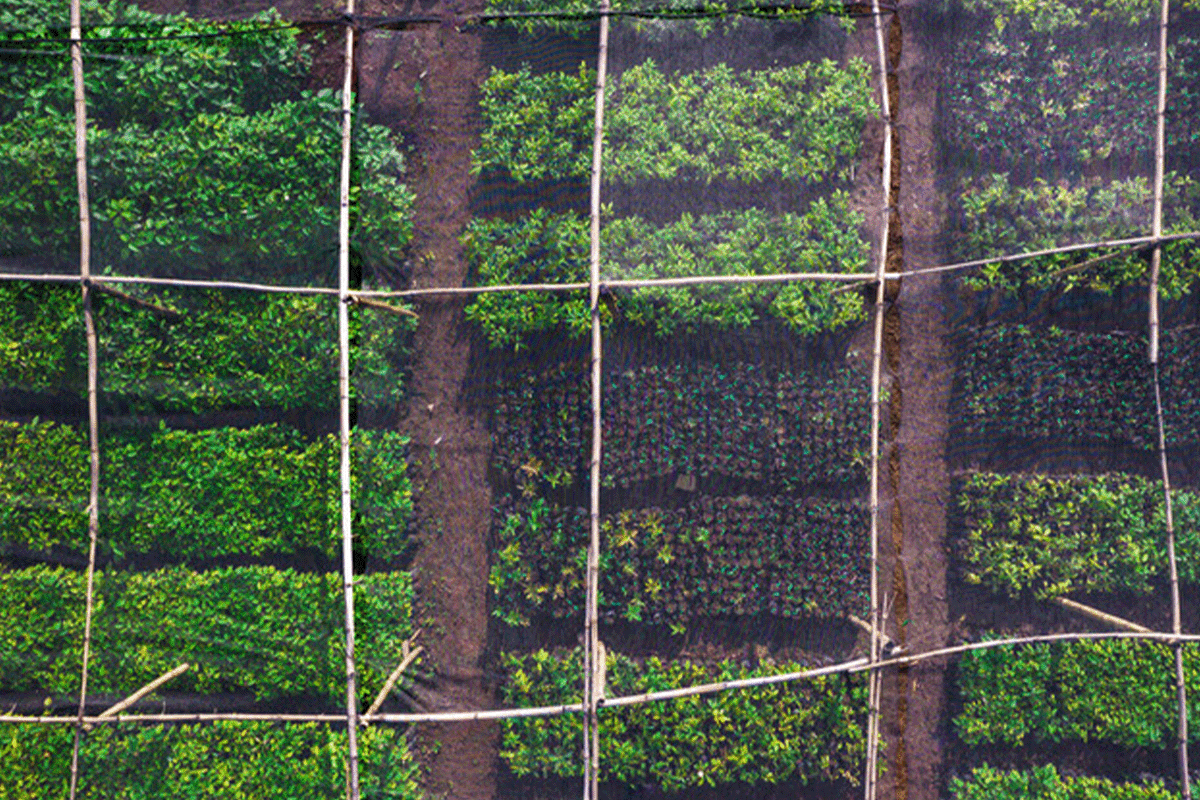 Drone view of young tree nursery, DGB reforestation project.
Drone view of young tree nursery, DGB reforestation project.
At DGB Group, our belief in the inherent power of nature and the critical importance of biodiversity drives our commitment to advancing conservation efforts. Through our carbon projects, we strive to foster thriving and healthy ecosystems, recognising that biodiversity is the foundation of sustaining life on our planet. We work in close collaboration with farmers, landowners, governments, and conservation organisations to transform this vision into reality. Our initiatives are dedicated to enhancing biodiversity and supporting forest conservation endeavours as we passionately contribute to preserving and protecting our natural world for future generations.















